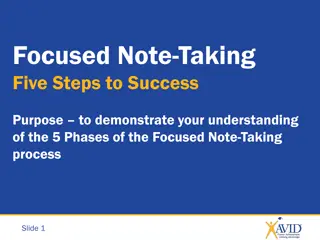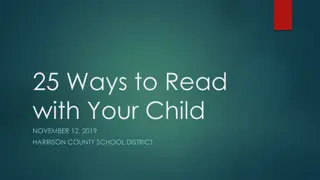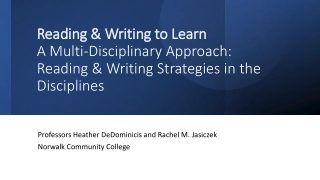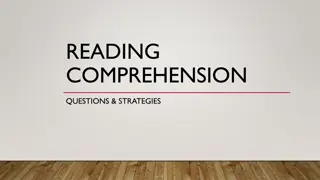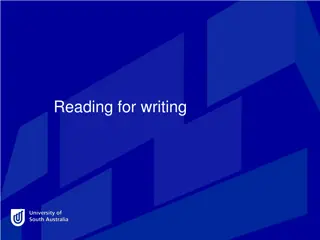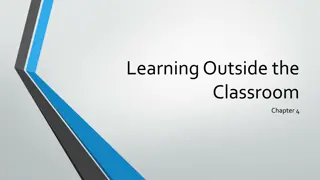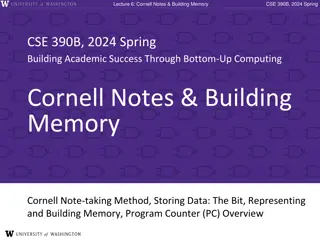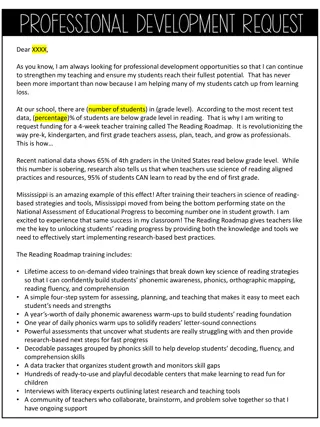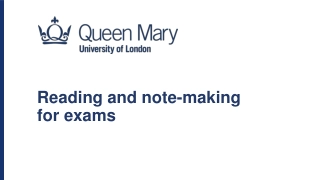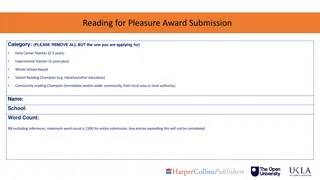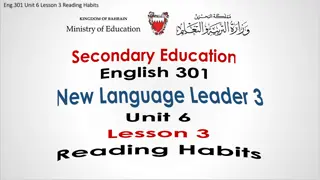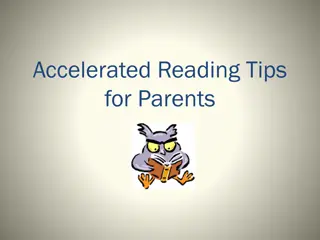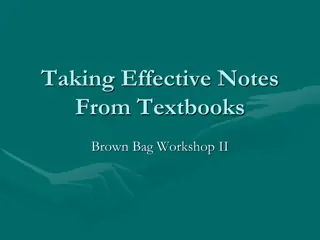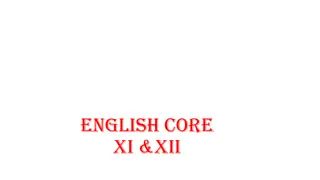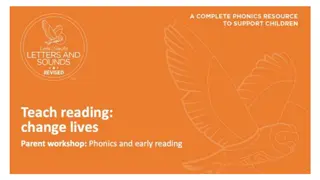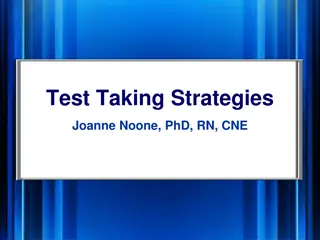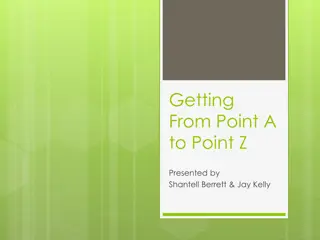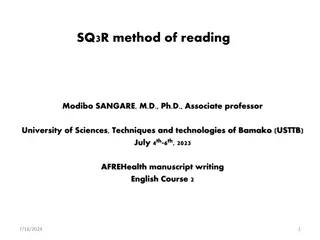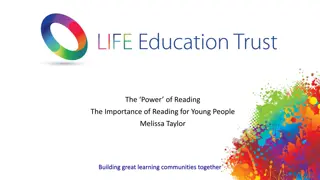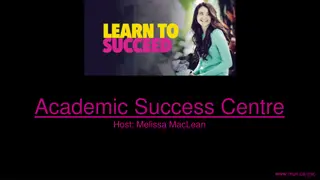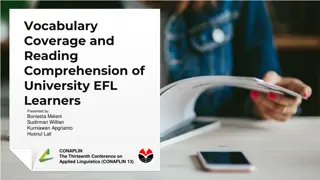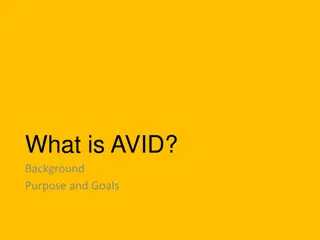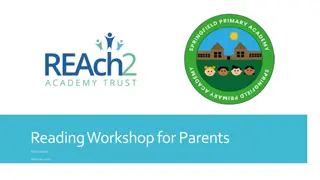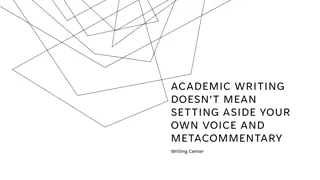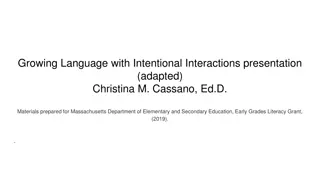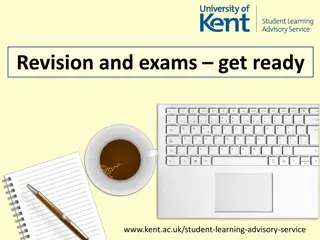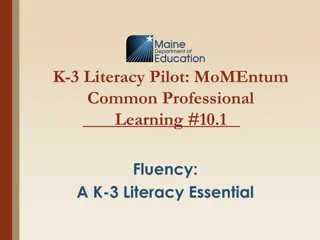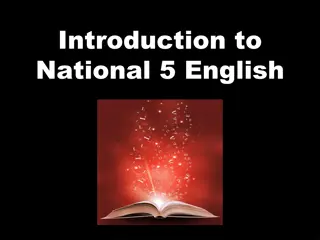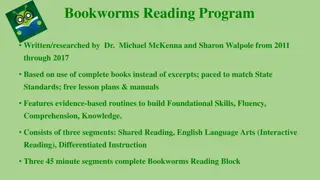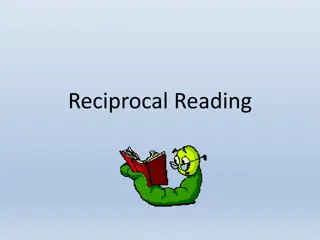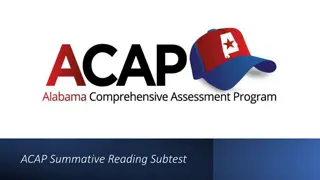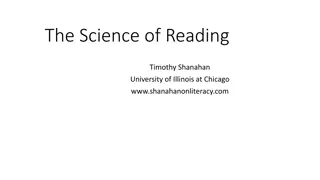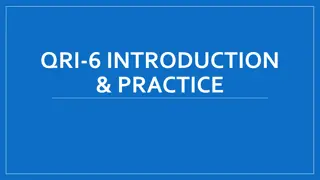Effective Reading and Note-Taking Strategies for Academic Success
Reading and Note-Making Guide from Kent.ac.uk emphasizes the importance of efficient reading and note-taking techniques for academic success. It covers methods to find relevant sources, determining the amount of reading required, and the concept of active reading. By following these strategies, students can enhance their understanding, knowledge development, and excel in assignment tasks and exam preparations.
Download Presentation

Please find below an Image/Link to download the presentation.
The content on the website is provided AS IS for your information and personal use only. It may not be sold, licensed, or shared on other websites without obtaining consent from the author. Download presentation by click this link. If you encounter any issues during the download, it is possible that the publisher has removed the file from their server.
E N D
Presentation Transcript
Reading and note making www.kent.ac.uk/student-learning-advisory-service
Reading and note making Reading and note making Introduction Reading is an essential part of independent study Learning to use the most appropriate methods of reading and making notes will help you to manage and use information effectively for: understanding and knowledge development developing responses to assignment tasks exam preparation
Reading and note making Reading and note making By the end of this tutorial you will: be able to identify some of the key methods used to source reading materials understand the importance of identifying a purpose before reading be able to identify different approaches to reading and when best to use each approach be able to identify and adopt a system of note taking that works for you
Reading: Finding relevant sources Reading: Finding relevant sources Identify materials from course or module reading lists Scan shelf of where you have found reading list materials Check bibliographies of relevant sources Undertake key word search of library databases etc. Speak with subject librarians and tutors Keep an accurate record of what you ve read, with full bibliographic details, so you can reference it correctly later
Reading: How much? Reading: How much? General reading: Core subject textbooks to get an overview of your subject area relevant to the your e.g. general concepts, terminology, ideas, key words 40-50% of your research Further reading: Combination of book chapters and journal articles to gain information relevant to your topic 20-30% of your research Advanced reading: Mostly journal articles, maybe primary research (records, reports, interviews) to gain information relevant to your assignment. 20-30% of your research
Active reading Active reading Active reading means reading with a purpose or a plan. Ask yourself: what do I need from this source? Context or background information about the topic? Detail and facts? Key dates, figures, events? Deep understanding of the factors, results, analysis? Knowing what you think you need from the source will help you select the appropriate sources and the most effective way of reading and making notes
Effective reading Effective reading Read as much as possible as quickly as possible, reviewing contents page, abstract, introduction, conclusion, headings and index of relevant terms to help get an overview of the topic or text. Skim reading Let your eyes roam around the page, looking for key words or terms. This usually involves looking for specific answers or information. Scan reading Read all of the text word-for-word, noting key themes or contributing factors for analysis, picking out important ideas to quote or paraphrase. Detailed reading
Note making: What to note Note making: What to note Note any important or relevant information for your understanding, assignments or exams, such as: key terms and definitions facts and figures ideas and concepts (and the authors or theorists etc) approaches and practices arguments and counter-arguments Always keep a record of what you read e.g. title, author, date, publisher, page numbers etc.!
Note making: How to note Note making: How to note These are your notes so you need to be able to understand and use them. Find a method that helps you to: Write clearly but quickly Summarise information Remember key themes and details you may need for assignments or further research Don t forget to keep track of what you ve read!
Note making: 7 approaches Note making: 7 approaches Linear notes Advantages Simple and familiar approach. Good for listing information. Limitations Order tends to follow the source. Difficult to go back and insert additional information. Repetitive format. Poor at getting bigger picture and not always possible to link ideas. Can reduce complex issues to lists.
Note making: 7 approaches Note making: 7 approaches Keyword notes Advantages Presents information in a clear and simple manner. Good for organising information into categories and hierarchies. Good for structuring information into a memorisable format. Limitations Can segregate information in an artificial manner. Can reduce complex issues to lists.
Note making: 7 approaches Note making: 7 approaches Timelines Advantages Good for clarifying the sequence of complex events/ideas/etc. Clear, simple and logical. Good for structuring information into a memorable format. Limitations Can over-simplify a more complex picture. Tends to be very descriptive.
Note making: 7 approaches Note making: 7 approaches Flow-chart notes Advantages Presents complex processes/ideas in a simple, easy to understand manner. Can help to reduce volumes of text. Links ideas offering a bigger picture, thus encouraging critique. Limitations May require practice.
Note making: 7 approaches Note making: 7 approaches Matrix/grid notes Advantages Good for understanding a topic thematically. Good for deconstructing complex information. Limitations Danger of categorising complex information in overly simple positive/negative terms.
Note making: 7 approaches Note making: 7 approaches Mind maps/spidergrams Advantages Generates processed information. Highly personalised. Whole brain activity. Can reduce large volume of text to simple graphics. Easy to arrange and link information. Good for showing connections/ big picture. More engaging than copying. Limitations Can become confused. Requires practice.
Note making: 7 approaches Note making: 7 approaches Herringbone notes Advantages Clarity. Good for compare/contrast type approaches to a topic. Good for setting out arguments/ opposing viewpoints. Limitations Danger of categorising complex information in overly simple positive/negative terms.
Note making: quotations and Note making: quotations and paraphrases paraphrases When taking notes you may decide to quote or paraphrase an idea from a source to use directly in your assignment: Quotation - short section of text that you copy exactly. Add to your notes quotation marks with full source details and page number Paraphrase short section of text in your own words. Add to your notes with full source details
Reading, research and note making Reading, research and note making You should now: Have a better idea of how to find reading material Know how to utilise different reading techniques Devise a system of note taking that works for you If there s anything you don t understand please book an appointment, or contact us at: www.kent.ac.uk/student-learning-advisory-service
Further resources Further resources For guidance on the broader range of academic skills that will help you succeed at university, please go to the SLAS webpages http://www.kent.ac.uk/student-learning-advisory-service where you can: Book a one-to-one appointment with a SLAS adviser Attend a range of Online Bitesize Skills Development sessions
Get in touch Get in touch SLAS CONNECT To book an appointment: www.kent.ac.uk/student-learning-advisory-service learning@kent.ac.uk SLASkent KentUniSLAS SLASkent




